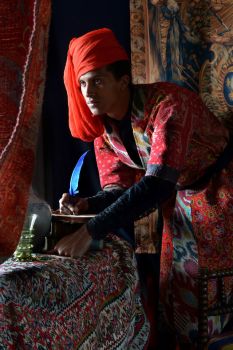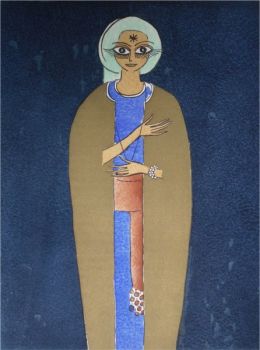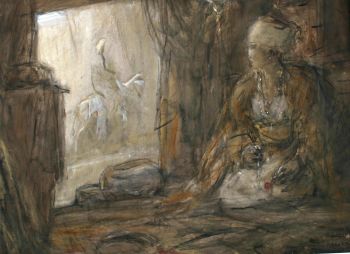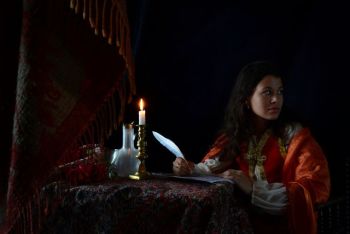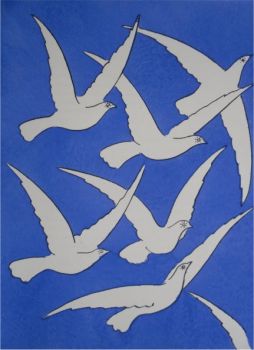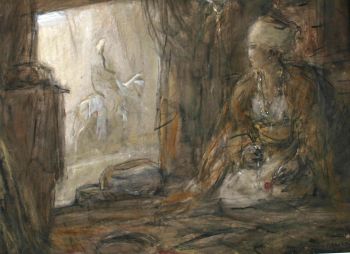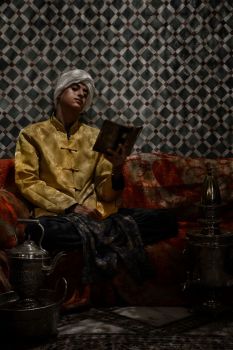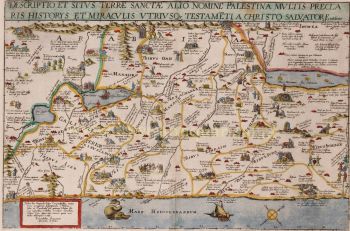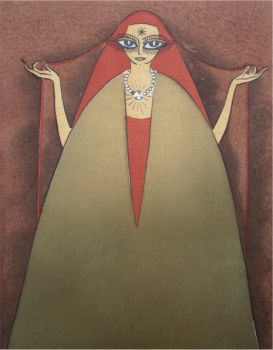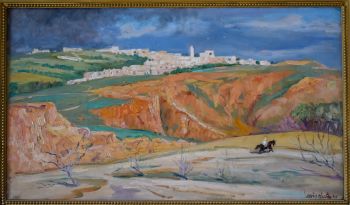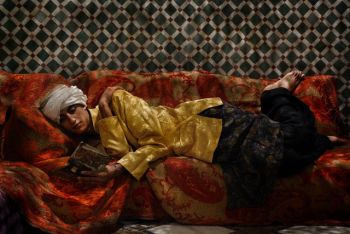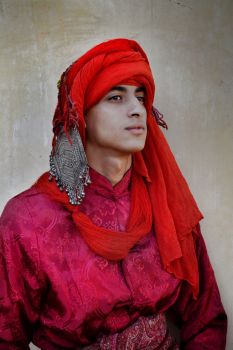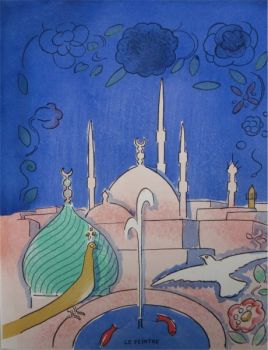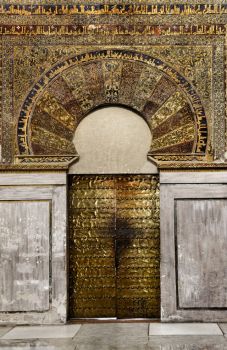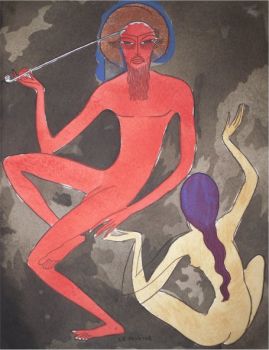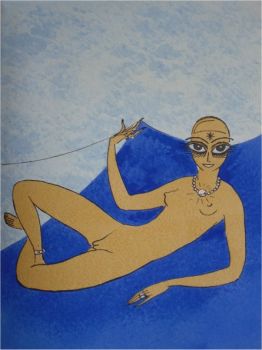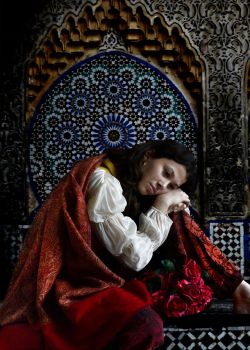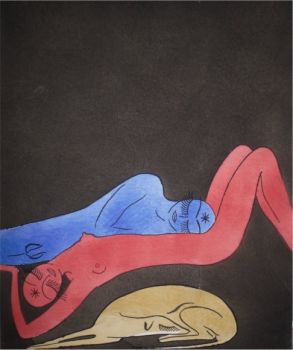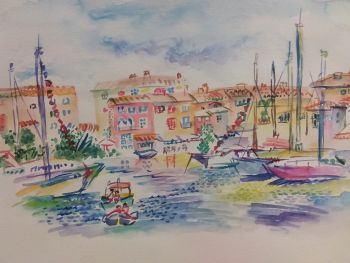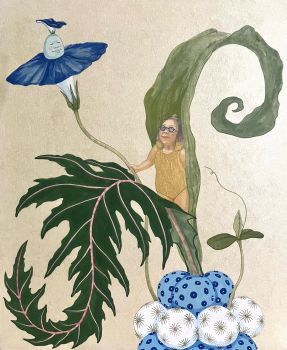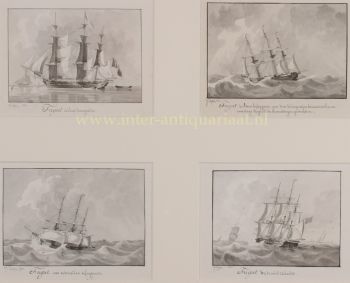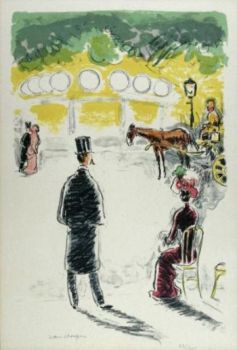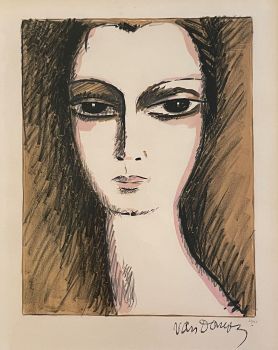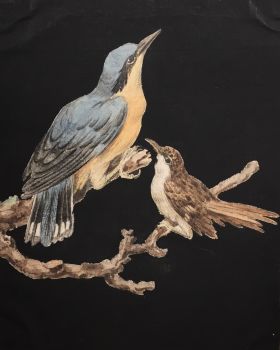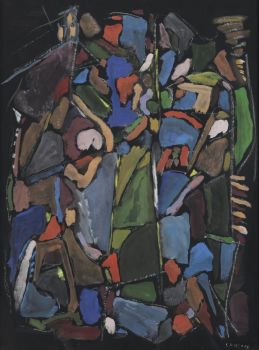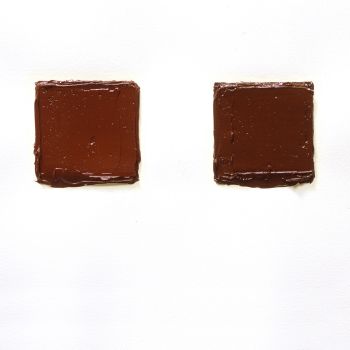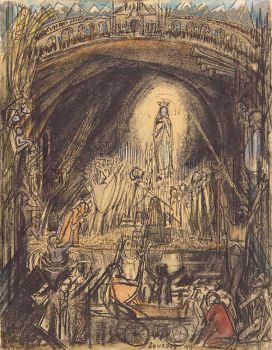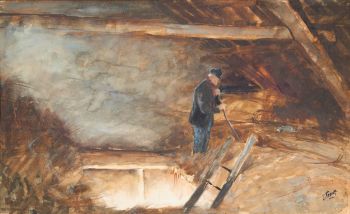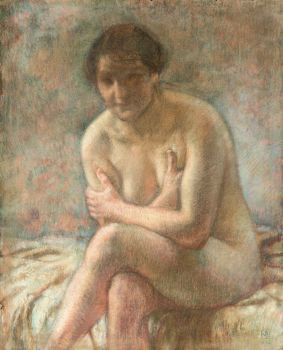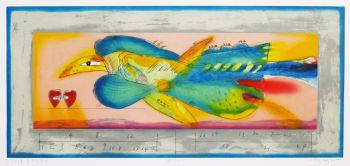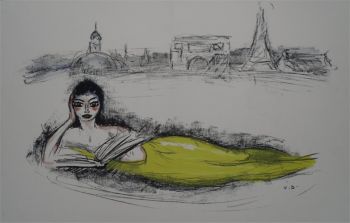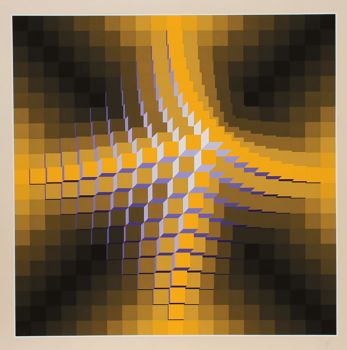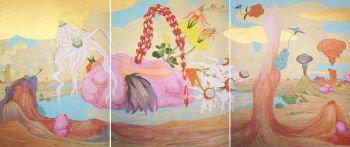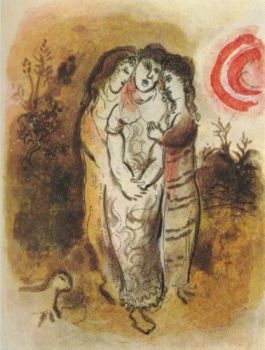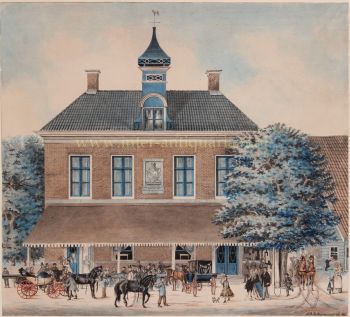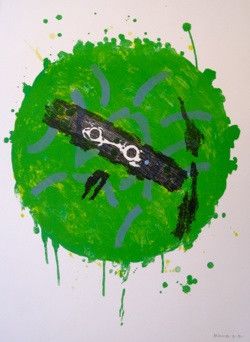Erpenius's excellent Arabic grammar 1628
Thomas van Erpe (Erpenius)
PapelCuero
Actualmente no disponible a través de Gallerease
- Sobre la obra de arteRudimenta linguae Arabicae.
Leiden, Boneventura and Abraham Elzevier, 1628.
Small 8vo (15 x 9.5 cm).
With title-page printed in red and black. 19th-century green sheepskin.
The rare second, corrected edition of Erpenius's influential Arabic grammar, which remained popular until well into the 19th century. Erpenius, one of the most distinguished orientalists of his day, published his famous Grammatica Arabica in 1613, followed in 1620 by the Rudimenta linguae Arabicae, a slightly abridged version of the Grammatica. It is dedicated to the Maronites Johannes Hesronita and Gabriel Sionita, the latter of whom would later edit the 1638-edition of the Rudimenta. It includes the Arabic text with Latin transcriptions of chapter 64 of the Quran.
Annotation on title-page: "Collegii Remensis / Societatis Jesu / Catalogo Inscriptur". Fine copy.
Rahir 263; Schnurrer 60; Smitskamp 69b; STCN (3 copies); Willems 295. - Sobre el artistaThomas van Erpe / Thomas Erpenius (1584, Gorinchem - 1624, Leiden), también conocido como Thomas van den Erpe, fue un famoso orientalista holandés. Después de estudiar lenguas orientales - Scaliger le aconsejó que lo hiciera - y teología en Leiden, viajó por Europa. Durante su estancia en París, se hizo amigo de Casaubon, un célebre erudito y filólogo clásico. En París también tomó lecciones de árabe y en Venecia estudió turco, persa y etíope. Erpenius fue nombrado profesor de árabe y otras lenguas orientales en la Universidad de Leiden en 1613. Allí instaló una imprenta para el árabe y otras lenguas orientales. Imprimió su primera edición de las fábulas de Luqman como su primera publicación de prueba (sin puntos vocales para los tipos árabes). Las anotaciones que hizo para su propia copia se incorporaron en la segunda edición (con puntos vocales) de 1636. Las fábulas de animales de Lukman eran una parte importante de la cultura árabe preislámica y siguen siendo populares hoy en día. La biblioteca de Erpenius fue transferida a la Biblioteca de la Universidad de Cambridge en 1632. Produjo muchas obras, entre otras gramáticas de varios idiomas orientales: árabe, hebreo, caldeo, sirio.
Artwork details
Related artworks
Engelbert Kaempfer
LIBRO DE ENGELBERT KAEMPFER1651 - 1716
Precio a consultarZebregs & Röell - Fine Art - Antiques
Antonie Derkinderen
Memory book Exhibition of Dutch Painting1892
Precio a consultarKunsthandel Pygmalion
Tilmanus Nicolaus Maastricht
Missale Romanum con monturas de plata holandesas1788 - 1792
Precio a consultarJacob J. Roosjen SRI
Hermann Nitsch
"UNDER MY SKIN" Signed book incl. small artwork and DVD in a matching box2010 - 2014
Precio a consultarGallerease Selected
Antonie Derkinderen
Memory book Exhibition of Dutch Painting1892
Precio a consultarKunsthandel Pygmalion
LAWRENCE WEINER
"SKIMMING THE WATER [MENAGE A QUATRE]" Signed book plus small artwork2010 - 2014
Precio a consultarGallerease Selected
Yoko Ono
YOKO ONO: "ARISING" SIGNED BOOK PLUS SMALL ARTWORK 2010 - 2014
Precio a consultarGallerease Selected
1 - 4 / 22Elisabeth Treskow
Lapislázuli afgano con incrustaciones de oro sobre un soporte de plata1950 - 1960
Precio a consultarJacob J. Roosjen SRI
1 - 4 / 24André Lanskoy
Composition Abstraite (sur fond noir)20th century
Precio a consultarFrans Jacobs Fine Art
Rene Rietmeyer
"Germany, Saarland, April 2001"2001
Precio a consultarEuropean Cultural Centre Collection
Artista Desconocido
Set of eight gouache drawings1799 - 1801
Precio a consultarRobert Schreuder Antiquair
1 - 4 / 24

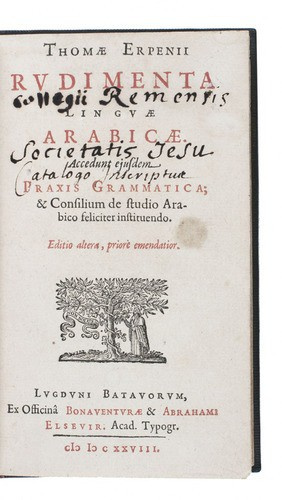



















!["SKIMMING THE WATER [MENAGE A QUATRE]" Signed book plus small artwork by LAWRENCE WEINER](https://media-2.gallerease.com/images/442bfd5f-fc31-4e18-a2fa-ee0c08eade64/350x350/skimming-the-water-menage-a-quatre-signed-book-plus-small-artwork.jpg)






